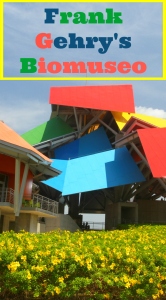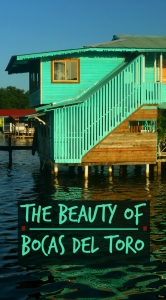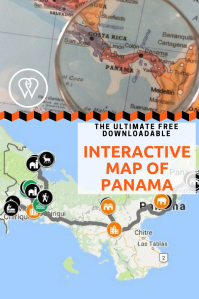The Panama Canal took global trade to the next level, putting San Francisco only 9 000 kilometres from New York City instead of 22 000 via the dangerous Cape Horn. In a global economy, the canal is also used to link Asia to Europe: if you are sitting in Europe or the east coast of the USA eating a banana from Peru reading this article, or using a cell phone or laptop made in Asia, chances are they went through the Panama Canal. However, the construction of this engineering masterpiece came at a high price.
Shortly after Colombus discovered the Americas in 1513, Balboa finds a land passage from the Atlantic to the Pacific Ocean at the Isthmus of Panama. Spain immediately sees the impact that such a route could have on global trade, opening the way to Asia and facilitating movements to and from South America, skipping the unpredictable Cape Horn. For that matter, from that moment onward, 60% of all the gold and silver sent to Europe went through Panama: goods were moved on mules and boats on the tricky Chagres River in a dangerous and exhausting 80-kilometre journey.
In 1849, the gold rush in California makes finding a quick way from the west coast to the east coast of the USA and vice versa critical. With the industrial revolution and the development of steam-powered machines and trains (1811), in 1855 the first transisthmian railroad opens through Panama.
The canal project more or less follows this railway. In 1881, the French came to Panama to start digging a sea-level canal on the model of the Suez Canal in Egypt, successfully completed by Ferdinand de Lesseps. But the Suez Canal is in a flat and dry land, the total opposite of Panama. After struggling for almost 8 years, swallowing close to an astronomic $300 million and costing 22 000 lives to tropical diseases and accidents, the de Lesseps’ project was abandoned.
The USA are the next in line. Their first move was to try to strike an agreement with Columbia (that owned Panama at the time) to get rights on the land surrounding the canal to be. Failing, their next move in 1903 consisted in using tensions between the Panamanian region and Columbia and to support their separation. The Theodore Roosevelt administration was quick to recognize the new republic of Panama in order to sign the Hay-Buneau-Varilla treaty as fast as possible: the USA gained full rights on the Canal Zone for a one-time fee and a yearly flat rent.
The engineering masterpiece will take 10 years to be completed. A 10-year inferno for the 45 000 workers mostly from the West Indies, as well as for the three chief engineers in charge: Wallace, Stevens and then Goethals. The latter was handpicked by Roosevelt himself as he was a second to none military engineer: unlike his predecessors, resignation was merely not an option. Stevens solved the technical challenge by designing a lock-based canal, raising boats by 26 metres to the level of the Gatun Lake and bringing them back down to sea level. The second breakthrough was to eradicate mosquitoes as they were indeed carriers of tropical diseases weakening and killing workers: malaria and yellow fever were the worse threats. The rest was a question of faith, determination, hard-work in horrendous conditions with many accidents from landslides to uncontrolled explosions… The canal opened in 1914 and changed global trade forever.
For many years, the USA had had full control over the Canal Zone, only renting the land from Panama for a flat rate that was raised a couple of times. But in 1964, a confrontation between the onsite American authorities and Panamanian students lead to a necessary redistribution. The Torrijos-Carter treaty of 1977 slowly transferred the canal to Panama which has been owning and running it fully since 31/12/1999.
This has had a massive impact on the Panamanian economy, accounting for close to 25% of its GDP (2008): during the first three years (2000-2003), the canal brought to Panama about half of what Panama had received from the rental of the zone by the USA for 85 years (1914-1999). Panama has been running operations successfully, increasing revenue and traffic. The canal has had many other consequences, the most obvious one being the cosmopolitan atmosphere of Panama, and more specifically its capital.
Today, the canal has reached its limit with about 40 boats per day for slightly over 300 million tons of goods per year. To cope with market demand, it is undergoing a $5.25 billion expansion to allow bigger container ships to pass through, doubling the tonnage of goods. But the Panama Canal faces tough competition. The Suez Canal already allows larger ships to go through and represents about 800 million tons of goods (2015). The canal of Nicaragua is only a project at the time of writing, but has found funding from China. Last but not least, because of global warming, the Northwest Passage via the Bering Strait in the Arctic Ocean is becoming a very serious option, making these canals through the Central American isthmus obsolete. Whatever the future holds, the Panama Canal will remain an engineering masterpiece.
Claire
Travel tips:
- Make sure to visit the excellent Museum of the Canal in Casco Viejo, Panama. If most of the descriptions are in Spanish, they are being translated into French and English, and audio-guides are available. The museum possesses original pieces and state-of-the-art multimedia for a very interactive experience.
- The Miraflores lock is interesting to watch boats passing the lock, but its exhibition space can be skipped. Your best bet is to go to the Gatun lock to observe boats passing the largest lock of the canal (for free).
- For another masterpiece of engineering, check out the Canal du Midi.
- Take a visual tour of Panama!
- Check out this interactive map for the specific details to help you plan your trip and more articles and photos (zoom out) about the area!
Don’t know where to start? Get inspired:
















7 Comments Add yours